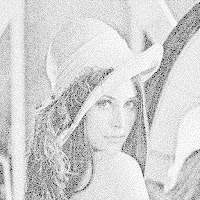It seems the current process cannot do better work than Secord's work. Your paper" stipple placement using distances in a weighted graph" shows a stippling effect for the ramp. But I guess the ramp image is not from black to white, right? Both masks has some artefacts when the area has dense stipples.







The ramp doesn't seem to have been reproduced very accurately. How about making a few solid squares of different intensity (90%, 70%, 50%, 30%, 10%) and verify that the number of black pixels is in the right proportion? This will tell you definitely whether you have got the right thing or not. I am still suspicious of the way leftover error is being handled.
ReplyDeleteAlso, the number of stipples should be the same no matter what distribution of spirals is being used. I mean, if only one spiral is being used you might see some artifacts, but if the algorithm is choosing between different spirals, that will change the locations of the stipples but not the number of stipples. So if you see the stipple number changing a lot (which you do in the example) that means there is a bug.
ReplyDelete